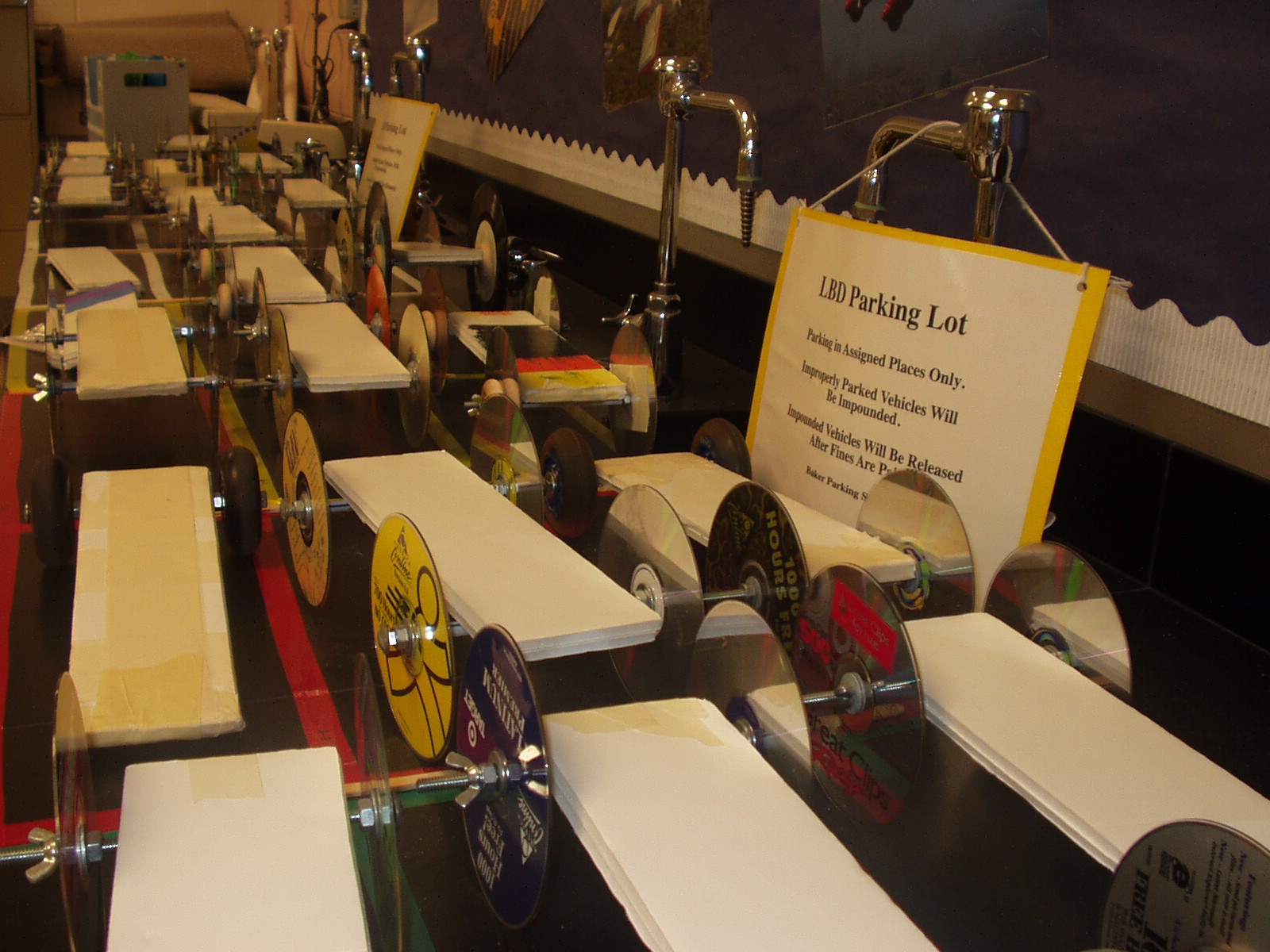 Many of the questions that are raised during white boarding are about keeping things going. The Coaster Car Mini-Challenge is designed to help students address those questions and to give them a chance to design and build the body and wheel-and-axle systems for their vehicles. Their challenge is to design an un-powered car that will roll down a ramp to a level surface and travel as far and straight as possible. While the students are designing their cars they will be learning a variety of important scientific concepts and practices, including friction, gravity, the ways forces combine, observation, and measurement.
Many of the questions that are raised during white boarding are about keeping things going. The Coaster Car Mini-Challenge is designed to help students address those questions and to give them a chance to design and build the body and wheel-and-axle systems for their vehicles. Their challenge is to design an un-powered car that will roll down a ramp to a level surface and travel as far and straight as possible. While the students are designing their cars they will be learning a variety of important scientific concepts and practices, including friction, gravity, the ways forces combine, observation, and measurement.
The students again divide into small groups, this time to begin work on their cars. We provide them with instructions for building a modestly-working vehicle, but there are a variety of improvements they need to make in those vehicles so that they perform well. The first time they are run down the ramp, cars usually veer off to the side, and often they don't go very far at all. This is because they are constructed in ways that cause a lot of unwanted friction. The wheels may rub on the chassis, or the axles may not be parallel, for example. As they lessen the friction in second, third, and sometimes fourth design iterations, they find that their vehicles go farther and straighter. The teacher uses those shared experiences to help students become interested in friction and other forces and how they combine with each other. But students don't know that yet. Right now, all they know is that their vehicles are not performing as they expected.
As they test their vehicles, we ask them to record their observations and measurements on "Testing my Design" pages in their Design Diaries. And after all groups have had a chance to test their vehicles, students report to each other about their results in a "Gallery Walk." This is where students discuss and explain their results up to this point. Without guidance, it's inevitable that groups will have collected data in different ways that make it difficult to compare different cars' performance. This is the perfect opportunity for the teacher to bring up the topic of fair testing and ask the students to decide what the fairest way is to test their vehicles if they want to be able to know whose is performing the best. The teacher helps students identify the different ways they've been getting their cars started and measuring the distance they've traveled, and the class decides which ways of starting the cars and measuring their distances are the ones they will all adopt.
|

